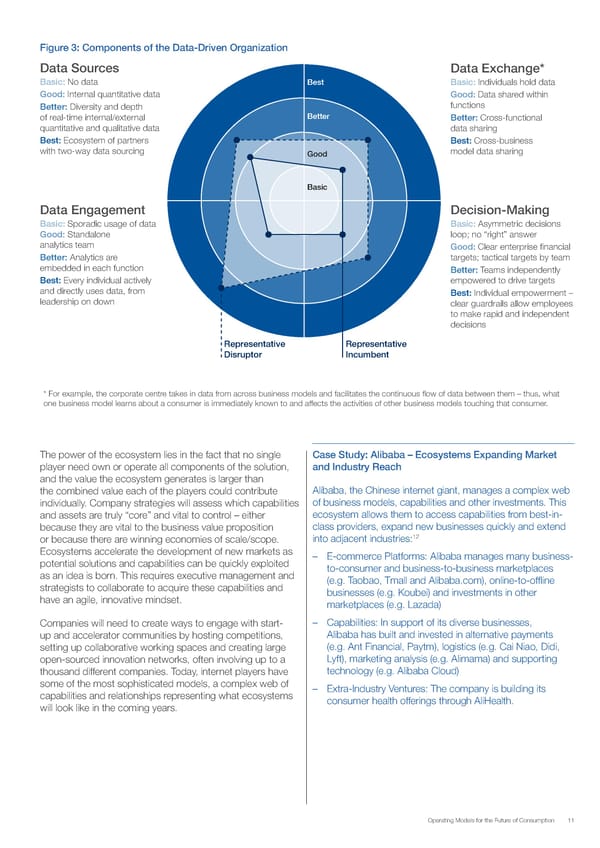Figure 3: Components of the Data-Driven Organization Data Sources Data Exchange* Basic: No data Best Basic: Individuals hold data Good: Internal quantitative data Good: Data shared within Better: Diversity and depth functions of real-time internal/external Better Better: Cross-functional quantitative and qualitative data data sharing Best: Ecosystem of partners Best: Cross-business with two-way data sourcing Good model data sharing Basic Data Engagement Decision-Making Basic: Sporadic usage of data Basic: Asymmetric decisions Good: Standalone loop; no “right” answer analytics team Good: Clear enterprise financial Better: Analytics are targets; tactical targets by team embedded in each function Better: Teams independently Best: Every individual actively empowered to drive targets and directly uses data, from Best: Individual empowerment – leadership on down clear guardrails allow employees to make rapid and independent decisions Representative Representative Disruptor Incumbent * For example, the corporate centre takes in data from across business models and facilitates the continuous flow of data between them – thus, what one business model learns about a consumer is immediately known to and affects the activities of other business models touching that consumer. The power of the ecosystem lies in the fact that no single Case Study: Alibaba – Ecosystems Expanding Market player need own or operate all components of the solution, and Industry Reach and the value the ecosystem generates is larger than the combined value each of the players could contribute Alibaba, the Chinese internet giant, manages a complex web individually. Company strategies will assess which capabilities of business models, capabilities and other investments. This and assets are truly “core” and vital to control – either ecosystem allows them to access capabilities from best-in- because they are vital to the business value proposition class providers, expand new businesses quickly and extend 12 or because there are winning economies of scale/scope. into adjacent industries: Ecosystems accelerate the development of new markets as – E-commerce Platforms: Alibaba manages many business- potential solutions and capabilities can be quickly exploited to-consumer and business-to-business marketplaces as an idea is born. This requires executive management and (e.g. Taobao, Tmall and Alibaba.com), online-to-offline strategists to collaborate to acquire these capabilities and businesses (e.g. Koubei) and investments in other have an agile, innovative mindset. marketplaces (e.g. Lazada) Companies will need to create ways to engage with start- – Capabilities: In support of its diverse businesses, up and accelerator communities by hosting competitions, Alibaba has built and invested in alternative payments setting up collaborative working spaces and creating large (e.g. Ant Financial, Paytm), logistics (e.g. Cai Niao, Didi, open-sourced innovation networks, often involving up to a Lyft), marketing analysis (e.g. Alimama) and supporting thousand different companies. Today, internet players have technology (e.g. Alibaba Cloud) some of the most sophisticated models, a complex web of – Extra-Industry Ventures: The company is building its capabilities and relationships representing what ecosystems consumer health offerings through AliHealth. will look like in the coming years. Operating Models for the Future of Consumption 11
 Operating Models for the Future of Consumption Page 10 Page 12
Operating Models for the Future of Consumption Page 10 Page 12